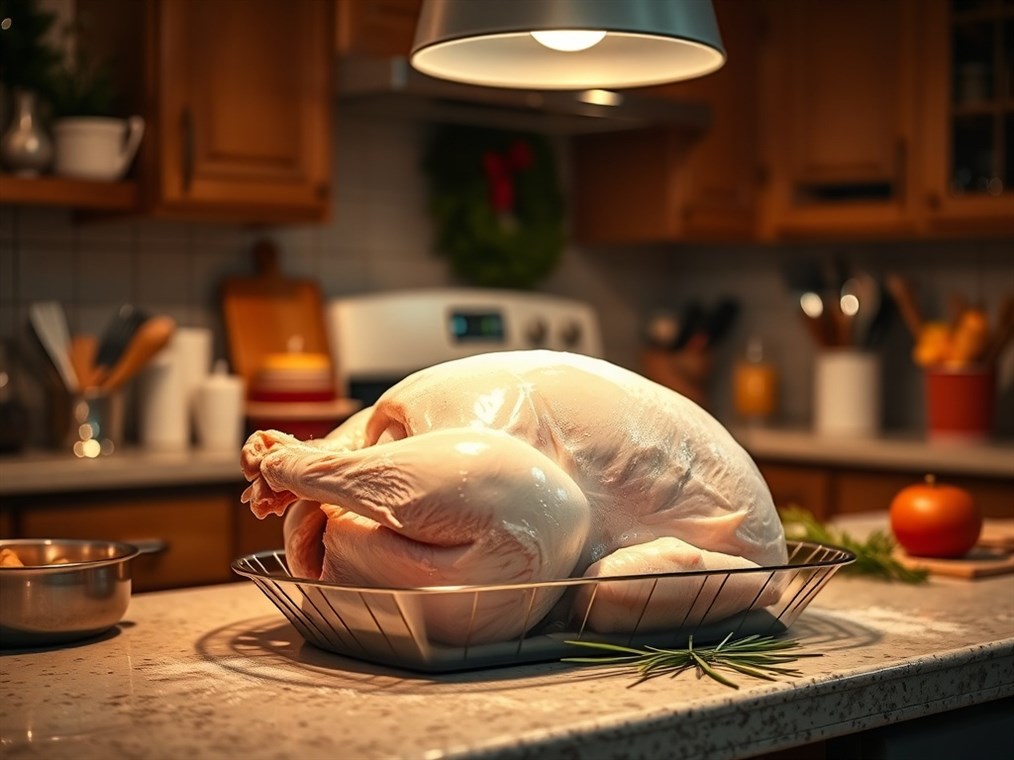So, You’ve Got a Frozen Turkey: Here’s the Lowdown on Thawing
Okay, holiday season is coming, and maybe you snagged a frozen turkey – smart move for the budget! But now what? Thawing that bird properly is everything for food safety and a truly delicious dinner. Trust me, you don’t want to mess this up.
The big rule? Keep that bird cold while it thaws. The USDA is super clear on this: frozen is safe, but the second it starts thawing, any sneaky bacteria that were hanging around before freezing can wake up and start multiplying. And that’s a recipe for disaster. Think of it this way: thawing at room temperature is like throwing a bacteria party. Not good.
So, how do you thaw it safely? You’ve basically got three options: the fridge, cold water, or, in a pinch, the microwave. Let’s break it down, especially for that 12-pounder you’ve got.
1. The Refrigerator: Slow and Steady Wins the Race
Honestly, this is the way to go. It’s the safest, hands down. Figure about a day for every 4 to 5 pounds. So, for your 12-pound turkey, you’re looking at roughly three days in the fridge.
Here’s the drill: Leave it in the original wrapping. Pop it on a tray or in a pan (breast-side up!) on the bottom shelf of your fridge. Why the bottom shelf? Drips happen, and you don’t want to contaminate anything else. Make sure your fridge is set to 40°F (4°C) or below. Cold is your friend here.
The bonus? Once it’s thawed, you’ve got an extra day or two to cook it. Talk about flexible!
2. Cold Water: Need it Sooner?
Alright, sometimes you’re short on time. Cold water thawing is faster, but it needs your attention. Plan on about 30 minutes per pound. So, for your 12-pounder, that’s around six hours.
The key here is to make sure the turkey is in a leak-proof bag. Seriously, double-check it! You don’t want water getting into the turkey, or turkey juices leaking out. Submerge the whole thing in a big container or your sink filled with cold tap water. Crucially, change the water every 30 minutes. This keeps the water cold enough to prevent bacterial growth. You might even need to weigh the turkey down to keep it fully underwater.
Big catch: you have to cook the turkey immediately after it’s thawed this way. No dilly-dallying!
3. Microwave: The Last Resort
Okay, this is really only for smaller turkeys that actually fit in your microwave. And you must follow your microwave’s manual, because every microwave is different. A general rule of thumb is about 6 minutes per pound, which puts your 12-pounder at around an hour and twelve minutes.
First, ditch all the packaging. Put the turkey on a microwave-safe dish (again, for drips). Use the defrost setting, and rotate and flip the turkey regularly to get even thawing. Those wing tips and drumsticks? They can start cooking before the rest of the bird thaws, so shield them with foil.
And just like with cold water thawing, you must cook that turkey right away.
Big No-Nos: What Not to Do
Seriously, avoid these like the plague:
- Countertop Thawing: Never, ever thaw a turkey on the counter. It’s a bacteria breeding ground.
- Hot Water: Hot water might seem faster, but it’s a bad idea. It encourages bacterial growth and can partially cook the turkey. Yuck.
- Weird Places: Dishwashers, garages, back porches… just no. Inconsistent temps and potential contamination are not your friends.
The Bottom Line
Three days in the fridge, six hours in cold water, or about an hour and twelve minutes in the microwave – that’s your thawing timeline for a 12-pound turkey. Fridge thawing is the safest bet. And no matter which method you choose, remember: cook that bird promptly after thawing to keep everyone happy and healthy. Happy cooking!

